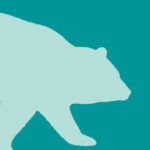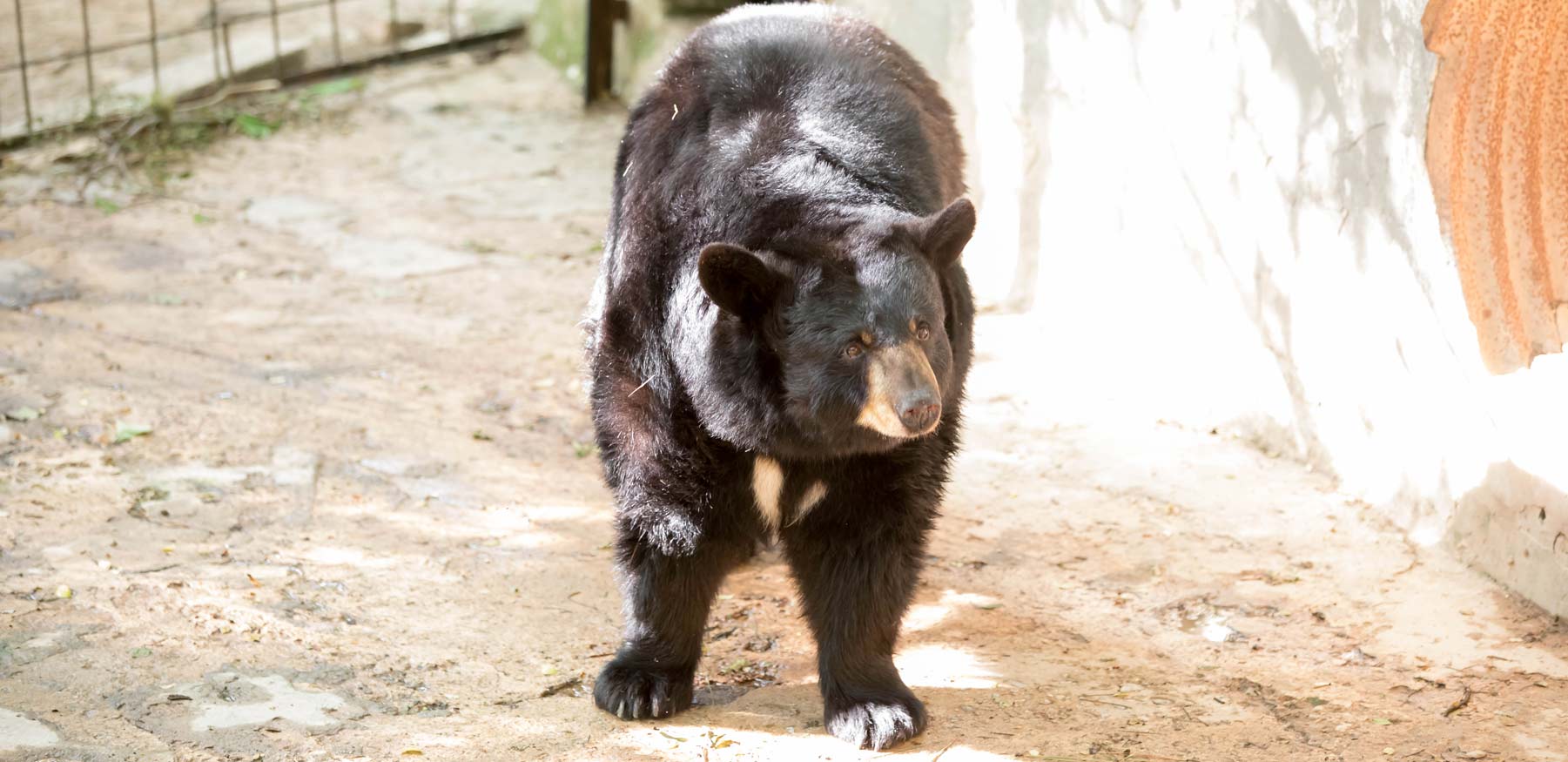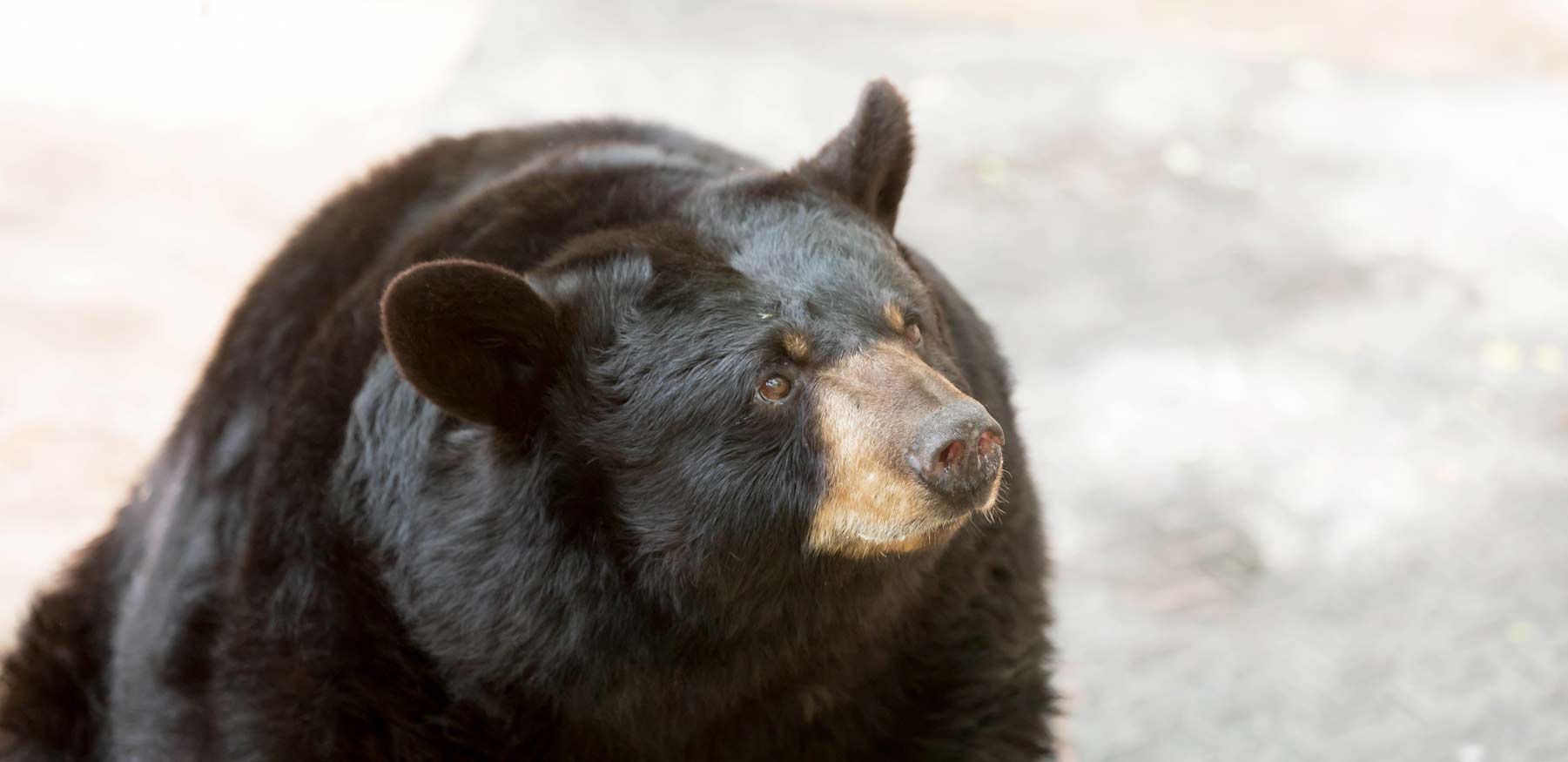
AMERICAN BLACK BEAR
A black bear’s keen sense of smell often gets them into trouble as they look for human food in campsites, rubbish, and even cars.
PROFILE
Our four black bears are all females and were born here at Yellow River (Game Ranch). Jiggly is the largest bear in our group. She also has a white U-shaped coloration on her chest. Her favorite treats are avocados and grapes. She likes to sit by the fence and let the keepers feed her. This gives keepers a great opportunity to build a relationship with her and be able to check out her teeth, feet, eyes, etc. stress-free on a daily basis. Splashy is the second youngest of our bears. She was named after her favorite activity: splashing! If you’re lucky enough, during the hot summer days you can catch her in the pool. She loves bubble baths and causing a commotion. BlueBeary was brought to us by the Department of Natural Resources in April of 2021. As a tiny cub, she was confiscated from the person using her as a “photo op” to pose for pictures with. We initially kept her behind the scenes as she regained her health. She will eventually join the adult bears full-time. Watch her growth progress here.
OVERVIEW
CONSERVATION STATUS
Least Concern
AVERAGE SIZE
Compared to a 6′ Man
AVERAGE WEIGHT
Females: 90 – 375lbs
Males: 126 – 551 lbs
AVERAGE LIFESPAN
18 – 23 Years
DIET
Omnivore
REGIONS
North America
American black bears can be found throughout Canada and across the northeastern United States. Large populations are found along the Appalachian Trail, from Maine to Georgia, as well as the northern Midwest, the Rocky Mountain region, the West Coast, and Alaska. The largest population in the contiguous U.S. is in California.
APPEARANCE
Despite their name, black bears can have silvery-grey, cinnamon, light tan, or brown fur (which often leads to them being mistaken for grizzly bears). An easy way to distinguish between the two is the black bear’s lack of shoulder hump and smaller overall size. Females, called sows, average 90 – 375 lbs while males, called boars, average 126 – 552 lbs. The largest on record is a male from the east coast of Canada weighing an estimated 1,100 pounds. Their sizes vary greatly depending on their age, health, season, and geographic location.
Black bears have large paws. Claws on their front feet tend to be more curved. Black bears are highly dexterous allowing them to open jars and doors very easily. Like most bears, they are very strong, capable of lifting rocks weighing 300 pounds as they search for food. For their size, they are quite fast with the ability of running up to 30 miles per hour.


CHARACTERISTICS
The American black bear’s diet consists mostly of insects like bees, yellow jackets, ants, and ant larvae. And yes, they love honey, too. Where available, black bears will fish for salmon, suckers, trout, or catfish. After a long hibernation in early spring, it is not uncommon for bears to prey on mule or deer fawns to help replenish calories.
Black bears will hibernate beginning in October or November by entering a den, hollowed-out tree, cave, or anywhere they will feel safe. In the warmest regions, like Florida, only pregnant and mothers with young cubs will hibernate. During hibernation, a bear’s heart rate will drop from 40-50 beats per minute to just 8. If the winter is mild, they may awaken and forage for food. While hibernating, their footpads will shed allowing fresh skin to form. As Spring begins, black bears will stay close to their dens as their bodies take a few weeks to normalize again.


